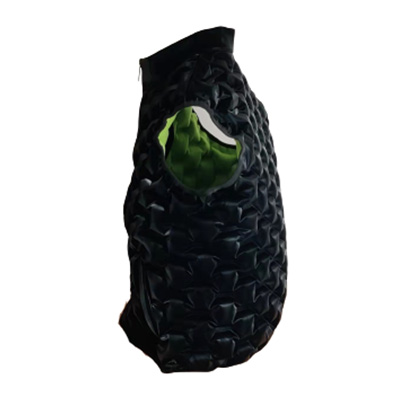The Role of Technology in Cold-Resistant Clothing
The technology behind cold-resistant clothing has come a long way. In the past, staying warm in extreme conditions often meant layering bulky clothing that restricted movement. Today, advanced technologies are being used to make cold-resistant wear more lightweight, breathable, and efficient at trapping body heat.
One of the key innovations is the development of smart fabrics. These fabrics use embedded sensors or conductive materials to regulate body temperature in real time. This “smart” technology allows the clothing to adjust its insulation properties based on external weather conditions and the wearer’s body heat. As a result, the clothes can get warmer when the temperature drops and cool down if the body overheats.
Thermal Insulation: More Efficient Than Ever
A critical element of cold-resistant clothing is its ability to trap heat. Modern synthetic insulation, such as Primaloft and Thermolite, offers a lightweight, compressible solution that rivals natural materials like down. Unlike down, however, these materials retain their insulating properties even when wet, making them an excellent choice for damp conditions.
In addition to synthetic insulation, new aerogel technologies have been incorporated into some high-end cold-resistant wear. Aerogels are incredibly light but extremely efficient at insulating, providing warmth without the added bulk. This makes them ideal for extreme cold-weather clothing that needs to balance weight and performance.
The Power of Hydrophobic Materials
Another notable development in cold-resistant clothing is the use of hydrophobic materials. These materials are treated to repel water, preventing it from soaking into the fabric and affecting the insulation. Waterproof outer shells combined with hydrophobic insulation materials ensure that wearers remain dry and warm, even in snowstorms or heavy rain.

For example, Gore-Tex fabrics are often used in high-performance winter gear. This fabric is both waterproof and breathable, ensuring that moisture from sweat doesn't accumulate inside the clothing, while also blocking out rain and snow.
High-Performance Cold-Resistant Gear for Specialized Activities
Cold-resistant clothing is not a one-size-fits-all solution. Different activities require specific clothing designed to meet unique challenges. For example, ski jackets and snowboard pants are often made with special features such as stretch fabrics, articulated seams, and extra insulation to provide warmth and flexibility. Climbing gear, on the other hand, focuses on durability and lightweight materials that ensure maximum mobility.
The military and arctic expeditions have long relied on cold-resistant clothing tailored for extreme environments. Military-grade cold-weather gear is built to withstand high winds, sub-zero temperatures, and long exposure to the cold. These garments often incorporate thermal insulation, windproof membranes, and special coatings that reflect heat back toward the body.
Sustainable Cold-Resistant Clothing: Eco-Friendly Options
As the demand for eco-conscious products grows, cold-resistant clothing manufacturers are focusing on sustainability. Brands are turning to recycled materials, sustainable down, and other eco-friendly options for insulation and outerwear. Recycled polyester, organic cotton, and eco-friendly dyes are now common in many cold-resistant clothing lines.
The fashion industry is also taking steps toward more sustainable cold-resistant wear by incorporating biodegradable or recyclable fabrics into their products. By using environmentally friendly practices and materials, the cold-resistant clothing industry is not only helping individuals combat the cold but also contributing to a healthier planet.

 English
English 简体中文
简体中文







 3rd Floor, East Gate, No. 2599 Park Road, Sheng Ze Town, Wu Jiang District, Suzhou City, Jiangsu Province
3rd Floor, East Gate, No. 2599 Park Road, Sheng Ze Town, Wu Jiang District, Suzhou City, Jiangsu Province  +86- 0512-63519080
+86- 0512-63519080
 +86-13584404311
+86-13584404311  FQsales1@163.com
FQsales1@163.com